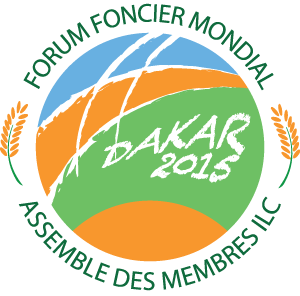 |
What are community lands? Community lands are the lands that up to three billion people around the world hold and use today under traditional, community-based systems of ownership. These could amount to eight or so billion hectares… |
Most community lands are commons
The land of a community typically includes areas that the community allocates to individuals or families for farming, building houses, or other developments. The terms and conditions vary by community but are generally secure. However, by area most land and resources within a community land area are not farmed or developed. Most are kept as common property.
‘Commons’ means the lands which community members own collectively. These are often forests, rangelands, marshlands, or ponds, small lakes, streams and rivers, foreshores, traditional mines, or wilder areas such as deserts and mountainous steep areas.
The subdivision of all these types of lands among community members does not make sense. What makes sense to past and modern-day communities is to keep these resources intact, use them collectively under rules, and to avoid the massive loss of values that occurs if these lands are cleared and turned into private farms or housing estates. Keeping such lands intact is also particularly important to community members who are most poor and most dependent upon resource harvesting.
The anchor to community lands
Community lands are community lands for one reason only: it is the community – not the State – which establishes the norms and rules about how rights to its locality are defined, used and transacted. It is the community norms and rules, which uphold and protect interests. This is what is meant by a local community-based tenure system. These are often termed customary or indigenous regimes.
Community land systems usually have a long history, going back centuries as the norms and rules by which members of communities obtain, own, use, and transfer lands. The rules change over time. The way in which a community exercises authority over land matters also changes over time. What does not change is the root of authority in the community. This is the single most uniform attribute among all customary/indigenous land systems around the world. The community produces and upholds rights to the land.
Are those rights recognised?
Everybody lives in modern states today. So the big question for many present-day rural communities is how far national land laws of their countries recognise their ownership.
There is some history to this. For example, it suited colonizers on all continents to pretend that no one owned lands in the territories they conquered so they could start off with a clean slate with their new conquests as “lands without owners” (empty lands, or terra nullius). This turned the original owners into tenants or even ‘squatters’ on their own lands. Over time individuals could get real property ownership but only on the terms laid down in the imported European systems of property, and which stripped rights of any relationship to the local community.
Those legacies still affect millions of traditional landowners today. Some countries have changed their laws to acknowledge that customary/indigenous tenure systems do amount to property ownership. For example, Brazil has already recognised 654 indigenous communities as owners of 115 million hectares of land and 481 African descendant communities as owners of 3.5 million hectares. Up to 70% of Australia’s land has been either already recognised as the property of Aborigine communities or is under claims being considered. Nearly 70% of Tanzania and Botswana and around 38% of Namibia and Kenya are among lands that progressive parliaments in Africa have recognised as the lawful property of communities and their members.
However, millions of communities still have no recognition that their land rights are more than token rights to occupy and, therefore, use lands belonging to others – usually by governments.
Why does this matter?
Insecure tenure matters to communities (and who are usually poor) because –
They can lose their land at any time because state laws do not recognise them as landowners. It is particularly easy for communities to lose their forests, rangelands, and other commons as these are usually least well entrenched as their property.
Even the farms of community members can be taken at any time, with minor compensation for the standing trees, crops, houses or other developments they have made to lands they are forced to leave behind.
Involuntary displacement always has multiple costs and consequences.
Grievances grow exponentially when communities are unjustly forced to move from their lands for reasons that stem more from private than genuine public purposes. Conflicts mount and can slip into civil war. A high proportion of conflicts over the last century have roots in anger and frustration over dispossession of traditional land rights.
Loss of lands and resources is also no small matter economically. Much of a family’s income and sometimes a family’s entire livelihood depends upon steady access to their local lands. When tenure is insecure or diminished livelihood plummets and poverty escalates.
Without legal ownership, do rural communities have the incentive to invest in protecting or developing these lands. Why should a community keep its local forest intact if the Government claims this is not their property and sends loggers to clear it? Why should a pastoral community not over-harvest gum Arabic in its dry season territory if it knows that by the time it returns there next year outsiders may have taken over these lands that the law presumes are unowned and which may even have been ‘lawfully’ allocated to newcomers and investors by the government?
What can we do?
The Global Call to Action on Indigenous and Community Land Rights responds to the current situation of crisis and opportunities around this issue. It serves as a mechanism for facilitating greater collaboration and coordinating collective action on Indigenous People’s and local communities’ land rights around the world. It builds on efforts of existing networks and organizations, and seeks to add value to and amplify those efforts.
There is a lot of knowledge at the level of communities and indigenous peoples, knowledge that is currently not being utilized. The Global Call to Action tries to raise attention towards the issue and at the same time tries to create policy space. It is driven by the facts that secure and equitable land rights and access to and control over land and other natural resources contribute to a diverse range of benefits and social values, including increased productivity, greater food security and empowerment, dignity and well-being, gender equality, adaptation to environmental risks and mitigation of climate change effects.
Empowering indigenous and local communities with the means to sustainably manage their food- and ecosystems is, therefore, critical for enabling positive social and economic development in the face of mounting global challenges. If done in an inclusive way, benefiting all members of the community, community land rights can also contribute to greater gender and social equality.
Taking this further at the Global Land Forum
At the Global Land Forum in Dakar (held at the King Fahd Conference Centre), two sessions will be dedicated to the cause of the Global Call to Action. On Wednesday May 13 at 14:15 a plenary is organized on how to serve justice for community land rights, which will feature some of the key representatives of the Global Call to Action on Indigenous and Community Land Rights. The same day, at 17.15, an interactive debate will take place in the Amphitheatre. In this debate we aim to identify challenges and strategies for securing indigenous and community land rights. It will serve to mobilize and expand collaborations and commitments towards the development of a global campaign. Please be there if you can. If you cannot be there – do follow our blog on http://www.globallandforum.org

